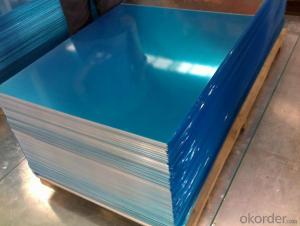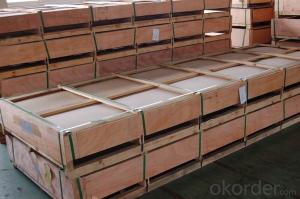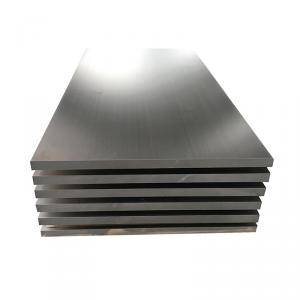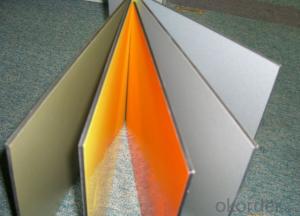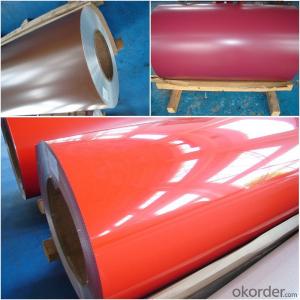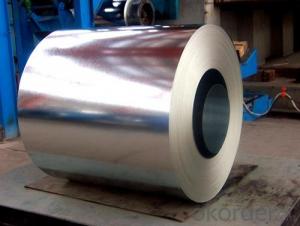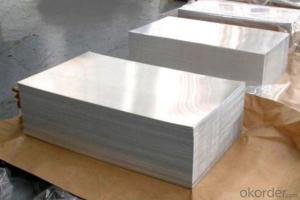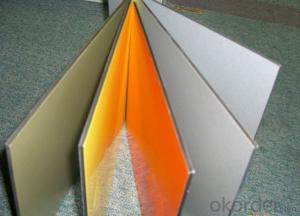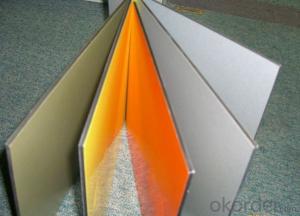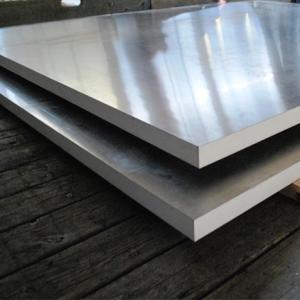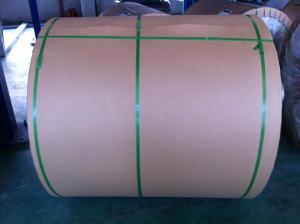Aluminum Sheets for Sale Home Depot - AA1100 Aluminum Sheets for Construction
- Loading Port:
- Shanghai
- Payment Terms:
- TT OR LC
- Min Order Qty:
- 5 m.t.
- Supply Capability:
- 10000 m.t./month
OKorder Service Pledge
OKorder Financial Service
You Might Also Like
1.Structure of Aluminum Sheets AA1100 Used for Construction Description
Aluminum Sheets AA1100 Used for Construction is cut from aluminum coils 1xxx. The aluminum content of Aluminum Sheets AA1100 Used for Construction is 99% at least. It has great ductility, heat conductivity, anti-corrosion and moisture resistance properties.
Aluminum Sheets AA1100 Used for Construction is widely used for electronics, instruments, lighting decoration, packing industry, house decoration, curtain wall, honeycomb-core panel, sandwich panel, aluminum composite panel and aluminum composite pipes.
2.Main Features of Aluminum Sheets AA1100 Used for Construction
• Superior quality of raw material
• Reasonable and stable chemical composition
• Accurate tolerance
• Goode mechanical property
3.Aluminum Sheets AA1100 Used for Construction Images



4.Aluminum Sheets AAAA1100 Used for Construction Specification
Alloy | AA1100 |
Temper | H14, H16, H18, H22, H24, H26, H32, O/F |
Thickness | 0.2mm -- 100mm |
Width | 30mm -- 1700mm |
Standard | GB/T 3880-2006,EN,ASTM,JIS |
5. FAQ of Aluminum Sheets AA1100 Used for Construction
A.How to guarantee the quality?
Customers are welcome to our mill to visit and check the products. Besides, we can arrange a third party to test Aluminum Sheets AA1100 Used for Construction.
B.When will you deliver the products?
Aluminum Sheets AA1100 Used for Construction will be delivered within 35 days after receiving advanced payment or original L/C.
- Q: Is it possible to use aluminum sheets as a material for flooring?
- <p>Yes, aluminum sheets can be used for flooring applications. They are known for their durability, resistance to corrosion, and ease of maintenance, making them suitable for various environments. Aluminum flooring is often used in commercial, industrial, and residential settings due to its strength and lightweight nature. It can be found in applications such as walkways, ramps, and as a covering for platforms. However, it's important to note that aluminum may not be the best choice for all flooring needs, especially where thermal insulation or a softer, warmer feel is desired.</p>
- Q: This question is asking for a list of different types of fasteners that can be used to attach aluminum sheets to a structure.
- <p>There are several types of fasteners used for attaching aluminum sheets to a structure, including: 1. Rivets: These are permanent fasteners that join two pieces by deforming the rivet material. 2. Screws: These are threaded fasteners that can be inserted and removed as needed. 3. Bolts: Similar to screws, bolts are used with nuts to secure aluminum sheets. 4. Adhesives: Chemical adhesives can be used for bonding aluminum sheets without visible fasteners. 5. Welding: Although not a fastener, welding can join aluminum sheets permanently. 6. Clips and Clamps: These are used for temporary or non-structural attachment. 7. Self-tapping screws: These screws create their own threads in the material being fastened. Each type has its own advantages and is chosen based on the specific requirements of the project.</p>
- Q: What are the different methods of finishing aluminum sheet edges?
- There are several methods that can be used to finish aluminum sheet edges, depending on the desired outcome and application. One common method is deburring, which involves removing any sharp or rough edges from the aluminum sheet. This can be done using various tools such as files, sandpaper, or specialized deburring machines. Deburring not only improves the appearance of the edges but also helps to prevent any potential injuries or accidents caused by sharp edges. Another method is chamfering, which involves creating a beveled edge on the aluminum sheet. This can be achieved using chamfering tools or by carefully filing or sanding the edges at a specific angle. Chamfering is often done to enhance the aesthetics of the aluminum sheet and to make it easier to handle and assemble. Additionally, edge rounding is a technique that involves smoothing the edges of the aluminum sheet to create a rounded or curved profile. This can be done using tools such as sanders, grinders, or specialized edge rounding machines. Edge rounding not only improves the visual appeal of the aluminum sheet but also helps to reduce the risk of injury from sharp edges. Furthermore, anodizing is a popular finishing method for aluminum sheet edges. Anodizing involves creating a protective oxide layer on the surface of the aluminum through an electrochemical process. This not only enhances the corrosion resistance of the aluminum but also provides a range of color options for the edges, allowing for customization and improved aesthetics. Lastly, powder coating is another method that can be used to finish aluminum sheet edges. Powder coating involves applying a dry powder onto the surface of the aluminum and then heating it to create a durable and decorative finish. This method offers a wide variety of colors, textures, and finishes, allowing for customization and enhanced visual appeal. Overall, the choice of finishing method for aluminum sheet edges will depend on factors such as the desired appearance, functionality, and application requirements. It is important to consider these factors and consult with experts to determine the most suitable method for a specific project.
- Q: What is the typical hardness of aluminum sheets?
- The hardness of aluminum sheets can differ based on the particular alloy and temper, resulting in a range of 40 to 70 on the Brinell hardness scale (HB). This level of hardness facilitates the ease of forming, machining, and fabricating aluminum sheets, rendering them applicable in various industries such as aerospace, automotive, construction, and manufacturing. Notably, the hardness of aluminum sheets can be enhanced further by undergoing heat treatment processes like annealing or hardening, allowing them to meet specific demands and enhance their mechanical properties.
- Q: Can 101 aluminum sheets be used in architectural cladding?
- Yes, 101 aluminum sheets can be used in architectural cladding. Aluminum is a popular choice for architectural cladding due to its lightweight, durability, and corrosion resistance. The grade 101 aluminum sheets are commonly used in architectural applications as they offer good formability and are easily workable. These sheets can be easily cut, shaped, and joined together to create customized cladding solutions. Additionally, aluminum can be coated or anodized to enhance its appearance and provide additional protection against weathering. Therefore, 101 aluminum sheets are suitable for architectural cladding projects.
- Q: why can aluminum sheet after oxide film removal react quicker with hydrochloric acid?
- the reason is very simple, the original aluminum sheet has a layer of dense oxide film AI2O3, which has prevented the inner aluminum sheet from reacting with hydrochloric acid. but after oxide film removal, aluminum sheet will directly contact hydrochloric acid, generating H2.
- Q: How are aluminum sheets cleaned and maintained?
- Achieving effective cleanliness and maintenance for aluminum sheets can be accomplished through a straightforward process. To commence, it is crucial to eliminate any loose dirt or debris from the sheet's surface. This can be accomplished by utilizing a soft brush or cloth to gently sweep away the particles. Subsequently, a mild detergent solution can be concocted by combining a small quantity of dish soap or a specialized aluminum cleaner with warm water. This solution ought to be applied to the sheets utilizing a soft sponge or cloth. It is essential to steer clear of abrasive materials or cleaners containing harsh chemicals, as these may inflict harm upon the aluminum surface. Once the detergent solution has been applied, the sheets should be thoroughly rinsed with clean water to eradicate any residue. It is pivotal to guarantee the complete removal of all soap or cleaner, as any remaining residue could result in staining or discoloration over time. Upon ensuring the sheets are clean, they should be dried using a clean, soft cloth or towel. This measure aids in preventing the formation of water spots or streaks on the surface. It is imperative to refrain from utilizing abrasive materials or engaging in vigorous rubbing, as this could lead to scratches on the aluminum. Regarding maintenance, it is advisable to regularly inspect the aluminum sheets for any indications of damage or corrosion. If any areas are discovered to be compromised, immediate repair or replacement should be undertaken to prevent further deterioration. Furthermore, applying a protective coating to the aluminum sheets is advantageous. This can be achieved by employing a specialized aluminum sealant or a clear lacquer. Such a coating serves to safeguard the surface against environmental factors like moisture, sunlight, and pollutants. In conclusion, the process of cleaning and maintaining aluminum sheets necessitates gentle and regular cleaning with a mild detergent solution, thorough rinsing, and drying with a soft cloth. Additionally, inspecting for damage and applying a protective coating can contribute to extending the longevity and enhancing the appearance of the sheets.
- Q: What is the weight of aluminium plate now?
- Is different according to the different density of aluminum alloy content, such as a series of pure aluminum and aluminum density is 2.71, which is close to that of 1060 Aluminum, 1050.1100 series of density is 2.71. and 3003 aluminum plate belongs to the aluminum manganese alloy, manganese alloy belongs to high density alloy, so the density is higher than that of 3003 aluminum plate 1060. and 5052 series aluminum magnesium alloy, magnesium alloy alloy belongs to low density, so the density of 2.68.5083 5052 aluminium alloy aluminum magnesium alloy containing the content because of the high price (4.5%) so 5083 aluminum density of 2.66. 2 series and 7 Series (such as 7075) belongs to high density alloy (copper and zinc) so high density.
- Q: For example, in hydrangeas, when aluminum reacts with the anthocyanins in the flower's petals, the hydrangeas turn blue, but what chemical reaction occurs?
- Two factors affect the color in Hydrangea macrophylla cultivars: soil acidity and the presence of aluminium in the soil. To obtain a blue hydrangea, aluminum must be present in the soil. The pH of the soil should be low (4 - 4.5). In alkaline soil aluminium is tied up. The plants are unable to absorb the existing aluminium and the flowers will not bloom blue. Also, when aluminium in the soil is used up the flower color will be red or pink again. If the soil is watered with aluminium salts aluminium is accumulated in the petals and the color turns blue. Only red and pink colored Hortensis are suitable for the breeding of blue flowers. They contain the dye component delphinidin. At the end of this site you find explanation and the formula: www.uni-regensburg.de/Fakultaeten...
- Q: What is the typical fatigue strength of aluminum sheets?
- The typical fatigue strength of aluminum sheets can vary depending on several factors such as alloy composition, thickness, manufacturing process, and surface treatment. However, in general, aluminum sheets have a relatively high fatigue strength compared to other materials. Aluminum alloys, especially those used in aerospace and automotive applications, are known for their excellent fatigue resistance. The fatigue strength of aluminum sheets is typically expressed in terms of the stress level (in MPa) at which failure occurs after a certain number of cycles. For aluminum alloys commonly used in structural applications, the fatigue strength can range from around 70 MPa to 150 MPa, depending on the specific alloy and thickness. However, it is important to note that this is a general range, and there can be significant variations based on the aforementioned factors. It is worth mentioning that the fatigue strength of aluminum sheets can be significantly enhanced through various techniques such as heat treatment, alloying, and surface treatments like shot peening or anodizing. These processes can increase the fatigue life and improve the overall performance of aluminum sheets in cyclic loading conditions. In conclusion, the typical fatigue strength of aluminum sheets can be considered relatively high compared to other materials, but it can vary depending on several factors. Proper material selection, along with appropriate processing and surface treatments, can significantly improve the fatigue performance of aluminum sheets.
Send your message to us
Aluminum Sheets for Sale Home Depot - AA1100 Aluminum Sheets for Construction
- Loading Port:
- Shanghai
- Payment Terms:
- TT OR LC
- Min Order Qty:
- 5 m.t.
- Supply Capability:
- 10000 m.t./month
OKorder Service Pledge
OKorder Financial Service
Similar products
Hot products
Hot Searches
Related keywords
